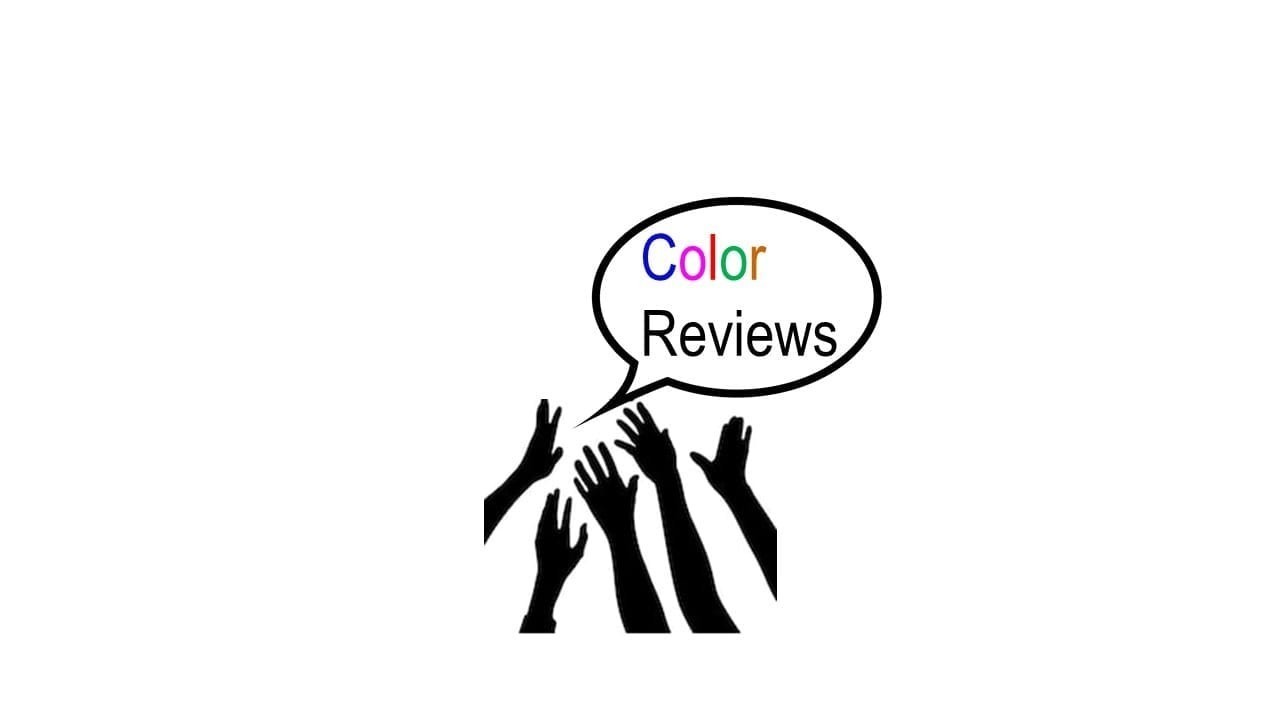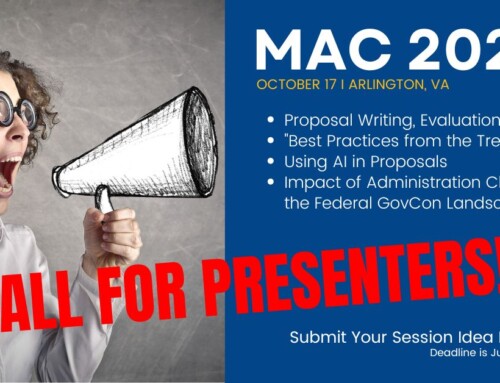Color team reviews, you know them. Those dreaded meetings when you take a hard look at the draft of your proposal and realize that you have a ton of work to do before this thing is a winner.
Is there any way to make these reviews less painful and more productive?
How can I get what I need from my reviewers the first time?
In the next 1400 words I’ll do my best to share what I have learned from way too many difficult proposal efforts I have been part of over the years. The keys:
- A Solid Strategy shared at the kick-off meeting
- Making sure the Right People are reviewers
- You have a Complete Draft for review
- Everyone is given Clear Guidance as to how to review the draft
- Document the Decisions made
Solid Strategy[intense_blockquote width=”33%” rightalign=”1″]As the proposal manager you can do so much for the writing team if you have a good process in place and you use it to make the best use of the time of the writers and reviewers.[/intense_blockquote]
The first thing needed for a successful color team review is a detailed proposal strategy — which you set to paper before you put pen to paper for the proposal — which in turn was based on a solid pre-proposal capture strategy. Specifically,
- In the months leading to the RFP release you collected objective data about your customer, known competitors, and the reputation your team has with the client agency. This resulted in a clear and realistic vision of how your team can win this work.
- Based on that work, you prepared win themes and a detailed proposal outline, which you have already communicated in the proposal kickoff meeting to your team.
- You have a solid compliance matrix so your reviewers don’t waste time pulling scores of “wills, shalls, and musts” out of the RFP.
Right People
Who should be in on the Pink Team Review? The reviewers are often the writing team reviewing each other’s sections. This is certainly a good way for each section writer to get a better idea of what is going on in the rest of the proposal. However, you must to make sure you have others in the mix who can challenge you on the choices made to date. All the writers have presumably bought into the capture strategy, but this naturally hampers their objectivity as reviewers; your most valuable reviewers will not necessarily be writers, but those who know the customer, the technical subject matter, and the RFP – mostly, in that order.
Who should not? Inviting leadership in at this point can be risky if they are overly critical toward the team or you fear they may inject spurious ideas into the process and derail you from the plan. It may be better to tell the VPs, “Let’s not short-circuit the process,” and offer to share a detailed report-out from the Pink Team review. This will show them where you stand with a good deal of the work already accomplished and detail the changes you contemplate for the more complete draft at Red Team. Reassure them that their input will be needed most when the process reaches the critical stage and “the hard decisions need to be made.” (They’ll like the sound of that!)
Who to Invite to Red Team? Ideally you are trying to mirror the people you suspect will be on the Government evaluation panel. At this point you should be looking for fresh eyes that have not been involved with the writing up to now but understand the client and can look at your strategy and give you an honest answer as to whether the document does what you believe it should do. Someone from the executive leadership should be included so they can advocate for the final approval of the offer to higher-ups.
Complete Draft
To give reviewers a fighting chance at promoting a better and more complete second draft, as well as a feel for the whole story line, the Pink draft should be complete with charts, tables, and figures included. If some parts are missing, there should be a clear description of what will go in each blank space. You need to find a balance between rushing to Pink Team before you have developed a full draft and letting the writers invest too much time polishing something up that may need major re-work. Know when to call time, “shoot the engineers”, and distribute your Pink Team review draft.
Clear Guidance
- A few days before they get the draft, give the reviewers who are not part of the writing team what they need to understand the proposal strategy: your storyboard(s), detailed outline, win themes, compliance matrix, and RFP.
- Reviewers should be focusing their review on making sure the draft is
- compliant with the requirements (be sure your compliance matrix cross-references RFP requirements to draft proposal sections)
- responsive to the problem statement in the RFP, and
- making a compelling and effective case for an award by proving to the customer that you are the low-risk choice for successful performance.
- Reviewers should be sternly directed not to waste time correcting grammar, punctuation, and formatting. That comes later!
- To help reviewers direct the energy where you need it, provide a score sheet for each section and direct them to rate each section either:
- red=unacceptable
- yellow=marginal
- green=compliant, correct, and acceptable
- blue=exceeds requirements, provides discriminators, and ‘selling’ messages
- Is the overall “story” of the prop clear and compelling; are the win themes represented throughout?
- To make the best use of everyone’s time, circulate an agenda for the review and then stick to it. Consider:
- Summary of goals and objectives for Pink Team review
- Overall comments from each team member
- Section-by-section review of document
- Dismiss external reviewers and then discuss next steps with the writing team
- Document all the comments post-call as well as the response (or non-response) to the comments
- Do-outs, next steps, and responsible individuals.
The review of the second draft, or Red Team review, will take place when the draft is 90% done—all sections are complete and formatted and you have worked out all those annoying inconsistencies in language, writer voice, and word choice. You will still plan to do a final copy-edit to the final-final draft. While your charts, figures, and tables are completed, you may still have to give the text to the graphic design team if they need it. Now is not the time to introduce major changes and shift strategy. All of that should have been decided, with leadership, in earlier strategy meetings. The purpose of the Red Team is to see how well the near-final draft has adhered to that strategy and what can be done to make this sucker SING to the evaluation panel.[intense_blockquote width=”33%” rightalign=”1″]You need to find a balance between rushing to Pink Team before you have developed a full draft and letting the writers invest too much time polishing something up that may need major re-work.[/intense_blockquote]
Documenting Decisions
- Make sure you have documented the comments from the Pink team review and what action was taken (or not taken) in response. This chart should be shared with the Red Team reviewers to confirm that the first-draft corrections have indeed been made.
- As before, give direction to the reviewers to provide an overall rating (red, yellow, green, blue) to each section and then suggestions to eliminate shortcomings or oversights in compliance, responsiveness, and understanding of the customer’s problem.
Consider tapping into the expertise on the Red Team panel by posing specific questions such as:
- The draft is usually long at this point—ask for cut recommendations
- How well have we done in interpreting, and showing our complete understanding of, the RFP requirements?
- Are the win themes evident throughout?
- Do we have the right past performance write-ups? Do our key personnel resumes respond 100% to all requirements for experience, education, and certifications?
- How can we better explain the proposed solution? Nested graphics, flowcharts, numbered lists, etc.?
As the proposal manager you can do so much for the writing team if you have a good process in place and you use it to make the best use of the time of the writers and reviewers. Try to avoid getting sucked into debates so you have time to make sure that the reviewers have what they need, the writers understand what their sections should accomplish, and what needs to change following reviews.





Somewhat disagree with not inviting leadership to Pink Team. Agree that they can derail, but whatever input they have probably won’t improve with age. Worst case is the executive with Gold Team input, particularly when that input was attainable far earlier (i.e., Pink Team when we are testing our implementation of strategy). You need executive engagement at this stage, because you need time to turn the ship to avoid the big obstacles. I can think of many more times the learned lesson was ensure senior leaders are on the Pink Team than not.